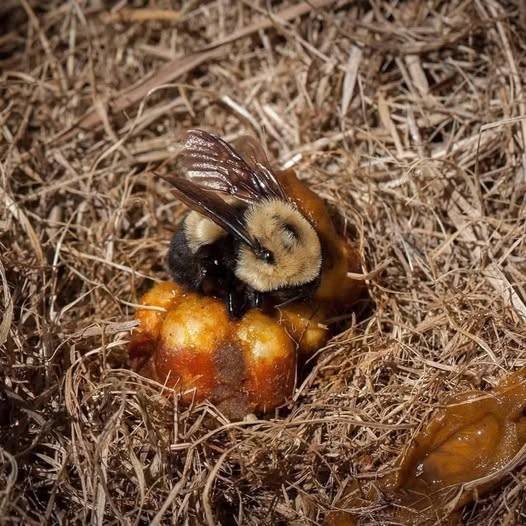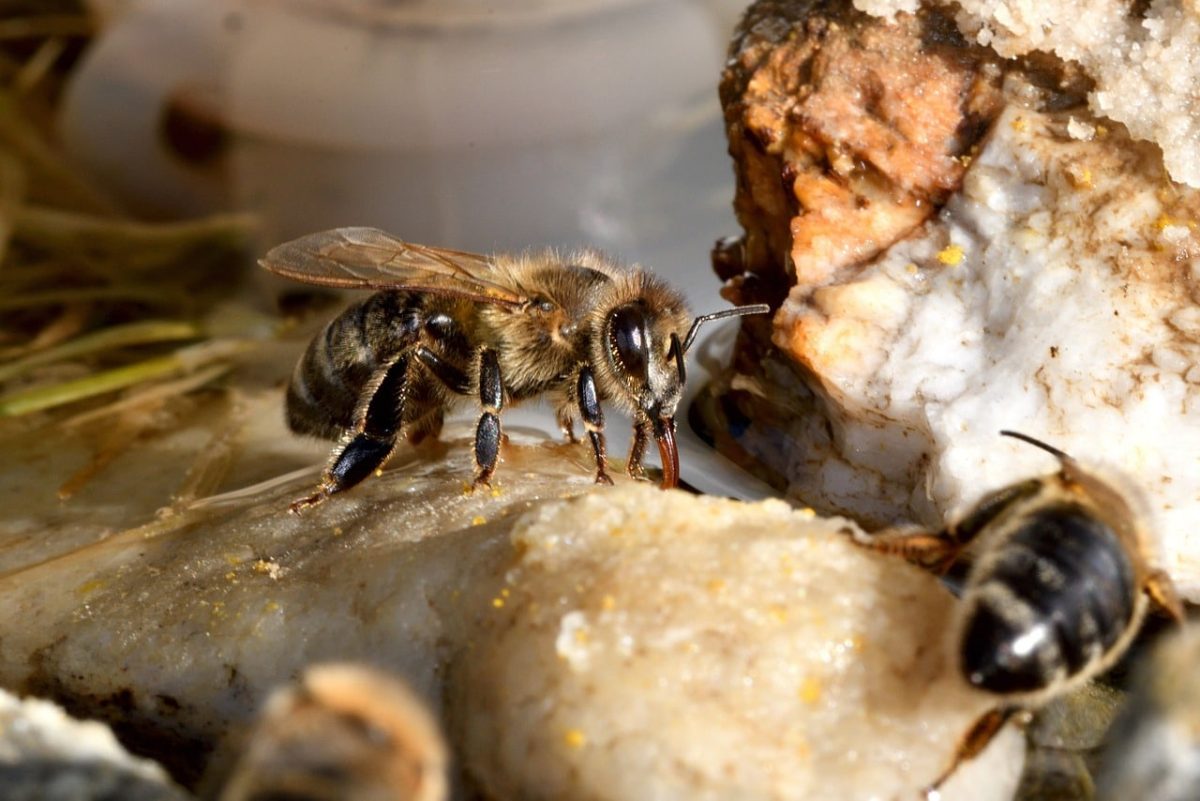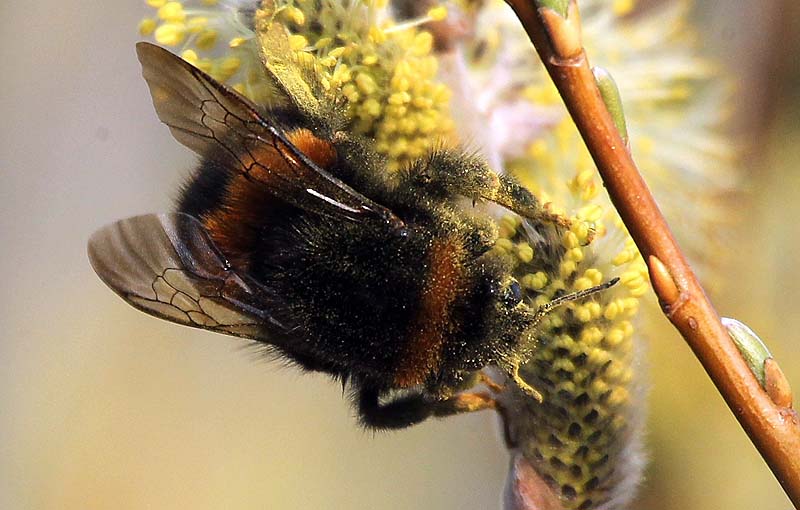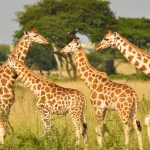The Ingenious Design of the Queen Bumblebee: Nature’s Tiny Architect

In the heart of spring, as flowers bloom and warm winds awaken life from its slumber, a quiet miracle unfolds beneath our feet. Hidden in the underbrush or tucked away in abandoned rodent holes, a queen bumblebee begins one of the most complex and vital tasks in nature — building a home, laying eggs, and raising the first generation of her colony entirely on her own.
How does this tiny creature, who has never received a single lesson or instruction, perform such intricate tasks with astonishing precision? The answer defies simple explanation. It invites us to marvel not only at the genius of biology but also at the wisdom of a Creator who has endowed even the smallest of beings with profound purpose and design.

The Queen Rises
After spending the winter hibernating in solitude, the queen bumblebee emerges with one mission: start a new colony. She is alone, hungry, and driven by instincts that are as mysterious as they are magnificent. She begins by searching for nectar-rich flowers, replenishing her energy and fueling her next phase — finding a nest.
The queen looks for safe, warm, and dark places to settle. An abandoned burrow, a clump of dried grass, or even an old birdhouse might do. Once she selects her nest site, she begins a process that reflects the complexity of architectural planning and maternal devotion.

Wax From Within
With her belly full of nectar, the queen begins an amazing transformation process. From special glands in her abdomen, she extrudes tiny flakes of wax, which she collects using her hind legs and transfers to her mandibles. There, she chews and molds the wax, forming it into a small container — a honey pot.
This pot is filled with nectar and serves a very specific function: it allows her to remain in the nest without constant foraging. This stored energy source will sustain her through incubation, when she must remain with the eggs nearly full-time.
Where did she learn to do this? She didn’t. These behaviors are instinctive — preprogrammed in her by something far beyond herself. It is a pattern written in her very being, revealing the profound wisdom woven into creation.

The First Nursery
With her honey pot in place, the queen gathers pollen from surrounding flowers, mixing it with a small amount of nectar. She shapes this into a ball — a rich, protein-packed cradle. On this ball, she lays 4 to 16 eggs, each containing the potential for new life.
Then, like the most caring of mothers, she forms another thin wax covering to protect the eggs and pollen ball. But she does not stop there. She does something almost unheard of in the insect world: she sits on her eggs, keeping them warm by vibrating her flight muscles, much like a bird brooding her chicks.
Through this ingenious method, the queen maintains the temperature at 86°F (30°C), an optimal warmth that helps her eggs develop and hatch quickly.
This behavior is not learned. It is not trial and error. It is knowledge embedded in the fabric of her life. And it speaks volumes of the divine intelligence that designed her.
The Miracle of Development
Within just 4–6 days, the eggs hatch into tiny larvae. The queen, ever vigilant, feeds them with the pollen she has prepared. She continues to shiver her muscles to keep them warm. As the days pass, the larvae grow, molt, and spin silk cocoons around themselves.
After about 21 days, they emerge — the first generation of worker bees. These new bees immediately begin taking over the duties of the nest, foraging for food, expanding the wax chambers, and caring for the next batch of eggs. Their emergence marks a critical turning point: the colony now begins to thrive.
And all of this was initiated by one single queen, following a blueprint she never saw, yet instinctively obeyed.
Not So Simple Life
When we look at a bumblebee, it’s easy to underestimate its complexity. But every aspect of her life — from foraging to flight, wax production to thermoregulation — is astonishing in its detail.
For example:
-
Flight muscles in bees operate independently of wing beats, allowing rapid wing motion at over 200 beats per second.
-
Bumblebees use polarized light and magnetic fields to navigate with precision.
-
Their color vision enables them to recognize different flower species.
-
Their body hairs carry electrical charges to more effectively collect pollen.
Is this truly the product of chance? Or is it the fingerprint of a Creator who delights in diversity and functionality?
The Language of Instinct
Many scientists refer to the queen bee’s behaviors as innate instincts, suggesting they are hardwired responses evolved over time. But even within the scientific community, there remains a sense of awe. How can a creature so small contain the mental programming to construct a nest, manage temperature, and initiate colony development?
There is a certain humility in acknowledging that science can describe the mechanisms — but not always explain the origins of such behaviors. As philosopher Alvin Plantinga once said, “It is not irrational to believe that nature is the product of intelligent design.”
Instinct, in the case of the queen bumblebee, is not simplicity. It is evidence of sophisticated programming, a symphony of behaviors working together with precision and purpose.
The Creator’s Signature
Scripture tells us in Romans 1:20, “For since the creation of the world God’s invisible qualities—His eternal power and divine nature—have been clearly seen, being understood from what has been made…”
In the bumblebee, we see more than biology. We see artistry. We see purpose. We see a Creator who imbued even the tiniest creatures with tasks that reflect sacrificial care, order, and provision.
From the wax that forms protective pots to the maternal shivering that keeps her young warm, the queen bumblebee does not behave randomly. Her life is a testament to a God who cares even for the smallest of His creations.
Implications for Us
What can we learn from the queen bumblebee?
-
Diligence: She works tirelessly, laying the foundation for an entire colony.
-
Sacrifice: She puts the needs of her future young before her own comfort.
-
Design: Her body and instincts are marvels of purposeful design.
In a world that often chases complexity for its own sake, the queen bumblebee reminds us that true wisdom can be found in humble places — in the quiet hum of a nest hidden in the grass, where life begins anew through the hands of a tiny queen.
Wonder in the Wild
The queen bumblebee may never attend school or read a manual. She may never question her calling or ask how she knows what to do. And yet, she does it — every time, every spring, with perfect faithfulness.
This is no accident. This is design. This is wisdom that surpasses understanding.
So the next time you see a bumblebee floating from flower to flower, take a moment to appreciate her story. She is not just a pollinator. She is a living parable — one that reminds us that God’s creativity is limitless, and His attention to detail reaches even to the smallest wings.











